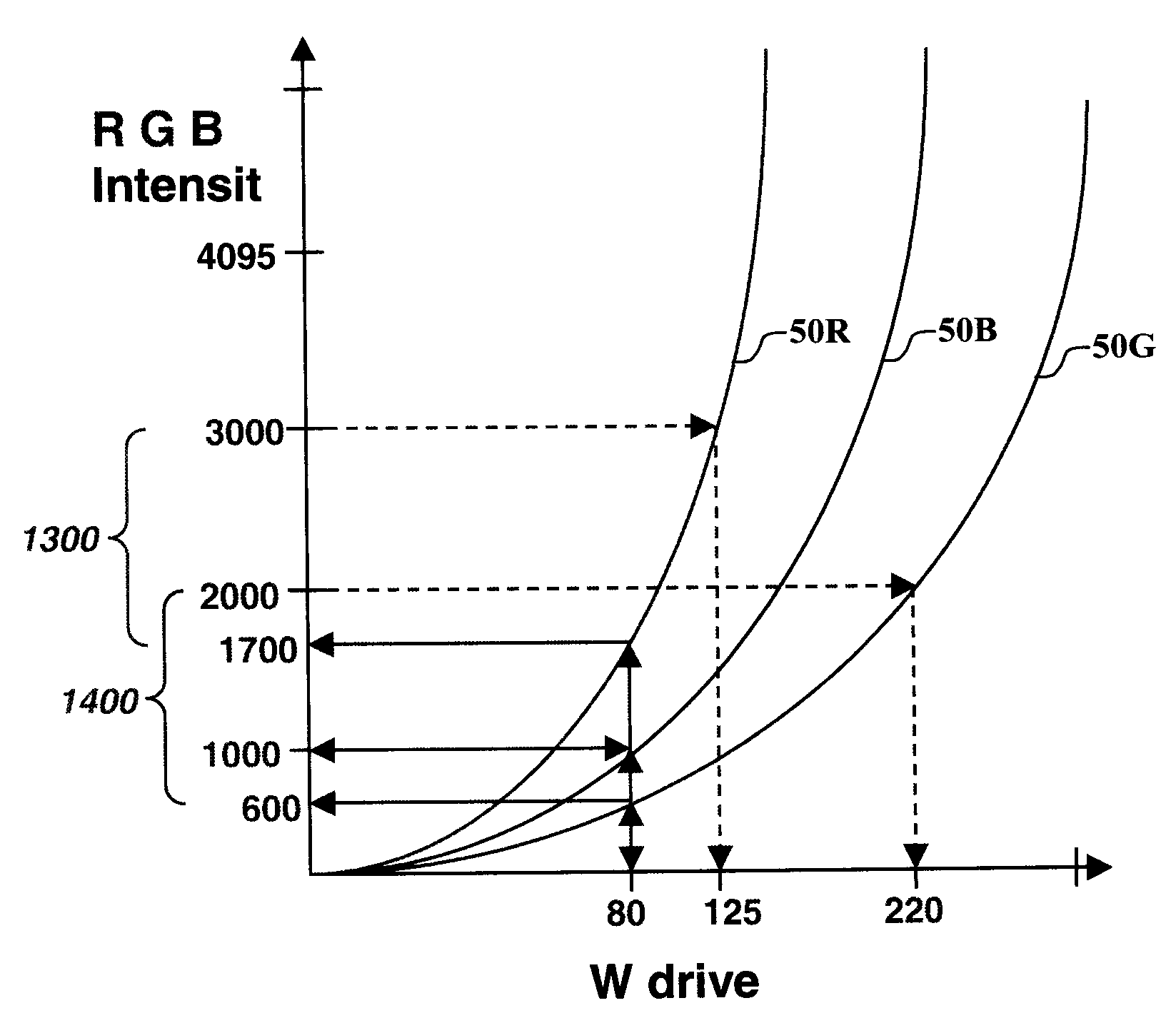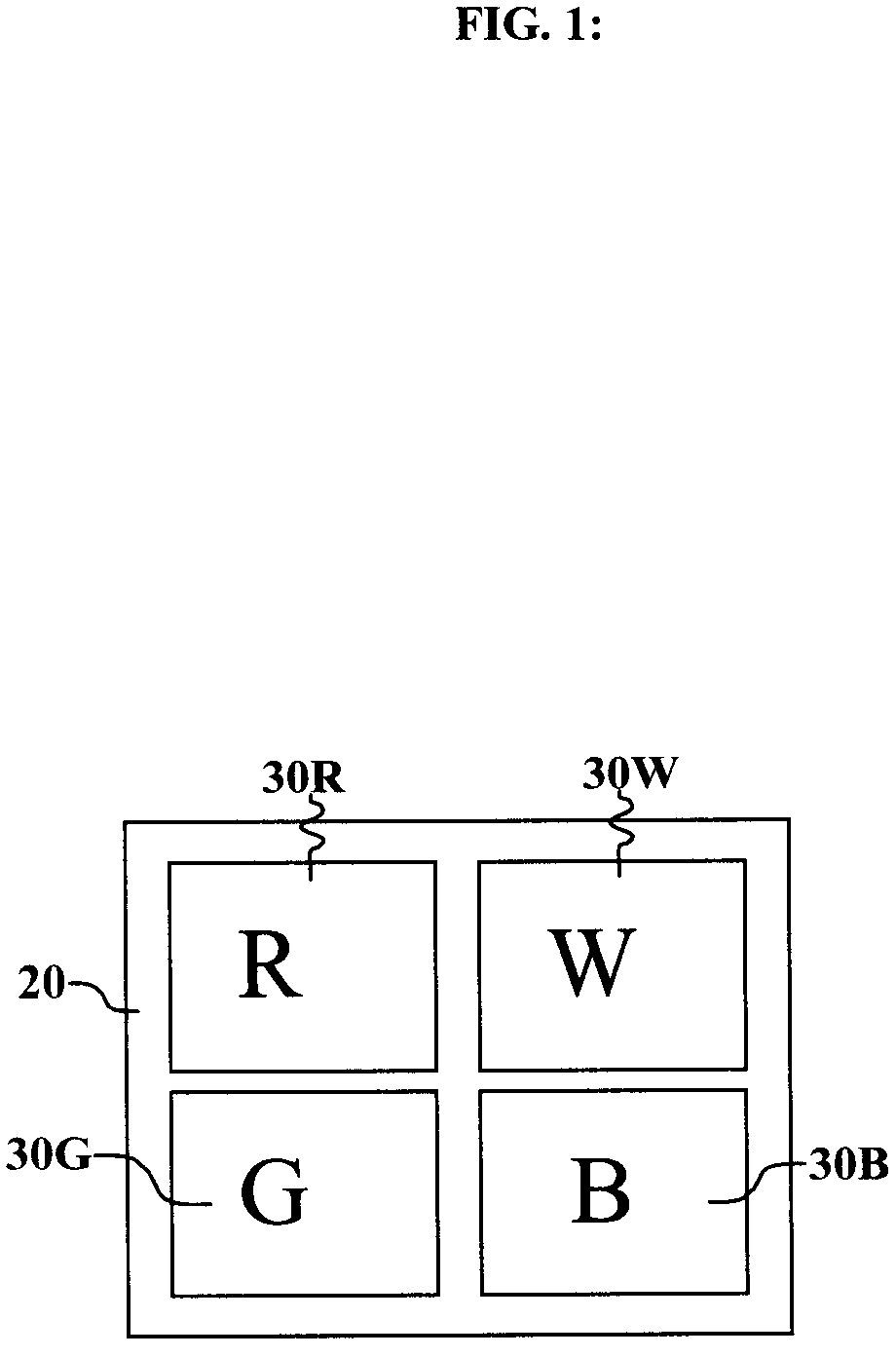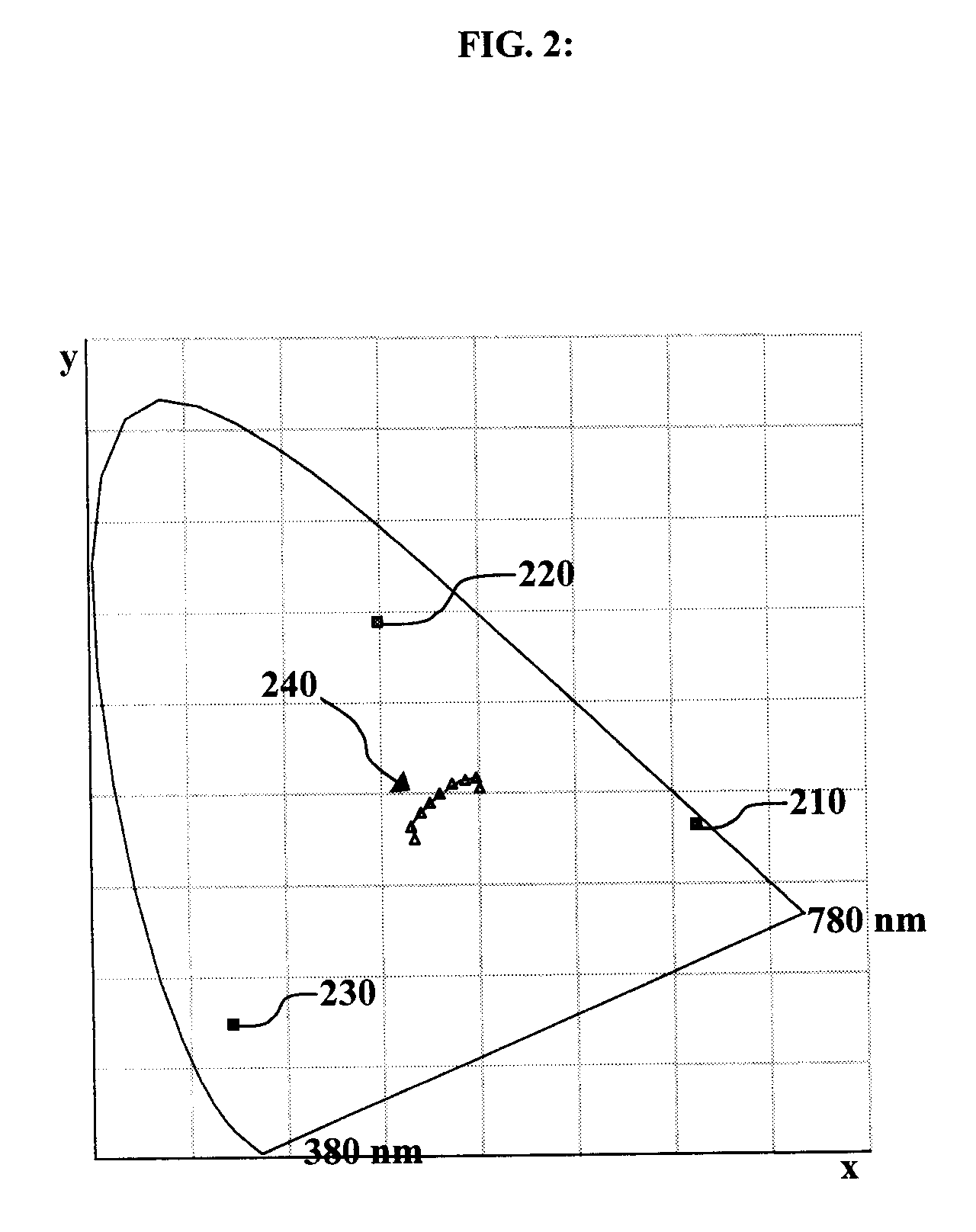Method for input-signal transformation for rgbw displays with variable w color
a technology of input signal and input signal, applied in the field of additive color rgbw displays, can solve the problems of color error, loss of color saturation, simple scaling correction, etc., and achieve the effect of simple measurement, low memory, and fully automated
- Summary
- Abstract
- Description
- Claims
- Application Information
AI Technical Summary
Benefits of technology
Problems solved by technology
Method used
Image
Examples
Embodiment Construction
[0022]Turning now to FIG. 1, there is shown a plan view of one embodiment of an additive display device such as an OLED device that can be used in the method of this invention. Note that this method is described primarily in connection with an OLED display embodiment, but the invention is also applicable to other additive display devices such as LCDs and sequential-field color projection systems. The display includes one or more pixels 20, each of which comprises at least four light-emitting elements, which correspond to an equivalent number of primaries. Three of the primaries are gamut-defining primaries, that is, the light-emitting elements emit light that determines the range of colors that the display can produce, and are commonly red (R) primary 30R, green (G) primary 30G, and blue (B) primary 30B. The additional W primary 30W has color that varies with drive level, and therefore with intensity. In OLED systems, this color variation with drive level occurs commonly in broadban...
PUM
 Login to View More
Login to View More Abstract
Description
Claims
Application Information
 Login to View More
Login to View More - R&D
- Intellectual Property
- Life Sciences
- Materials
- Tech Scout
- Unparalleled Data Quality
- Higher Quality Content
- 60% Fewer Hallucinations
Browse by: Latest US Patents, China's latest patents, Technical Efficacy Thesaurus, Application Domain, Technology Topic, Popular Technical Reports.
© 2025 PatSnap. All rights reserved.Legal|Privacy policy|Modern Slavery Act Transparency Statement|Sitemap|About US| Contact US: help@patsnap.com



